1.
Introduction
In this work, Λ refers to an associative ring, and Z(Λ) denotes the center of Λ. The symbols [r,s] and r∘s stand for rs−sr and rs+sr, respectively. If S⊆Λ, define F:Λ→Λ to be centralizing on S if [s,F(s)]∈Z(Λ) for all s∈S; and is commuting on S if [s,F(s)]=0 for all s∈S. A mapping F is said to be strong commutativity-preserving on S if [s,t]=[F(s),F(t)] for all s,t∈S.
Λ is considered prime if rΛs={0}, where r and s are both in Λ, implying that either r is zero or s is zero. This prime ring definition is equivalent to: (ⅰ) The product of two non-zero two-sided ideals of Λ is not zero. (ⅱ) The left annihilator of a non-zero left ideal is zero; for further information, see [1], page 47. Λ is considered semiprime if rΛr={0}, then r=0. If D(rs)=D(r)s+rD(s) holds for every r,s in Λ, then the additive map D is said to be a derivation.
In a recent publication [2], Bell and Daif introduced the idea of a ring's centrally extended derivation (CE-derivation). Suppose that D is a mapping of a ring Λ. If D(s+u)−D(s)−D(u)∈Z(Λ) and D(su)−D(s)u−sD(u)∈Z(Λ) for every s,u∈Λ, then D is known as a CE-derivation. The CE-(ρ,σ)-derivation on Λ has been described by Tammam et al. [3] as a map D on Λ achieves, for each s,u∈Λ, both
The concept of homoderivations of rings was first introduced by El-Soufi in 2000 [4]. A mapping ℏ on a ring Λ is defined as a homoderivation if it satisfies the relation ℏ(su)=sℏ(u)+ℏ(s)u+ℏ(s)ℏ(u) for all s,u∈Λ, provided that ℏ is additive.
The following are a few instances of homoderivations:
Example 1.1. [4] Let Λ be a ring and ϕ be an endomorphism of Λ. Then, the mapping ℏ:Λ→Λ defined by ℏ(u)=ϕ(u)−u is a homoderivation of Λ.
Example 1.2. [4] Let Λ be a ring. Then, the additive mapping ℏ:Λ→Λ defined by ℏ(u)=−u is a homoderivation of Λ.
Example 1.3. [4] Let Λ=Z(√2), a ring of all the real numbers of the form u+s√2 such that u,s∈Z, the set of all the integers, under the usual addition and multiplication of real numbers. Then, the map ℏ:Λ→Λ defined by ℏ(u+s√2)=−2s√2 is a homoderivation of Λ.
Melaibari et al. [5] demonstrated the commutativity of a prime ring Λ in 2016 by admitting a non-zero homomoderivation ℏ that satisfies any one of the following requirements: ⅰ. [v,u]=[ℏ(v),ℏ(u)], for all v,u∈U, non-zero ideal of Λ; ⅱ. ℏ([v,u])=0, for all v,u∈U, a non-zero ideal of Λ; or ⅲ. ℏ([v,u])∈(Λ), for all v,u∈Λ.
According to Alharfie et al. [6], a prime ring Λ is commutative if any of the following requirements are met: For all v,u∈I, ⅰ. vℏ(u)±vu∈Z(Λ), ⅱ. vℏ(u)±uv∈Z(Λ), or ⅲ. vℏ(u)±[v,u]∈Z(R). ℏ is a homoderivation of Λ, and I is a non-zero left ideal of Λ.
The commutativity of a semiprime (prime) ring admitting a homoderivation meeting certain identities on a ring was investigated in 2019 by Alharfie et al. [7] and Rehman et al. [8].
Over the past few years, researchers [9,10,11] have obtained many significant results pertaining to different aspects of homoderivations.
In 2022, Tammam et al. [12] extended the concept of homoderivations by introducing the notion of n-homoderivations, where n is an integer. A map ℏn is known as an n-homoderivation if it fulfills the requirement ℏn(su)=sℏn(u)+ℏn(s)u+nℏn(s)ℏn(u) for all s,u∈Λ, provided ℏn is additive.
We draw inspiration from Bell and Daif's study [2], building on the new concept of n-homoderivations introduced in [12]. We focus on exploring the notion of a centrally extended n-homoderivation (CE-n-homoderivation), where n∈Z, as an extension of the traditional definition of homoderivations. Moreover, we explore several results regarding the ring commutativity of a ring equipped with a CE-n-homoderivation fulfilling specific conditions.
Definition 1.1. Let s and u be any two elements in Λ and n be an integer, and let Hn be a mapping on a ring Λ. If Hn achieves
then Hn is called a CE-n-homoderivation.
It is clear that the previous definition generalizes the idea of centrally extended derivations (CE-derivations) presented by Bell and Daif [2] to the general case of centrally extended homoderivations of the type n (CE-n-homoderivations).
Chung was the first to develop the idea of nil and nilpotent derivations in [13]. Consider a ring Λ that has a derivation δ. δ is considered to be nil if k=k(r)∈Z+ occurs for every r∈Λ with δk(r)=0. If the integer k can be freely taken out of r, then the derivation δ is said to be nilpotent.
Definition 1.2. Assume that S⊆Λ and that H and ϕ are two maps on a ring Λ. For some k∈Z+−{1}, H is considered nilpotent on S if Hk(S)={0}. If ϕ(H(s))=H(ϕ(s)), for every s∈S, then two mappings H and ϕ are said to be commute on S.
Remark 1.1. According to our definition of a CE-n-homoderivation, we assert that
(1) Any CE-0-homoderivation of Λ is a CE-derivation on Λ.
(2) Any CE-1-homoderivation of Λ is a CE-homoderivation on Λ.
(3) Any n-homoderivation is a CE-n-homoderivation, but the inverse (in general) is not true.
Remark 1.2. θHn(r,s,+) and θHn(r,s,⋅) refer to the central elements generated through the influence of Hn on the sum r+s and the product r⋅s, respectively, for any two elements r,s∈Λ.
Theorem 1.1. Given a ring Λ, let n be any arbitrary non-zero integer. If the following centrally additive map γn:Λ→Λ satisfies
for each s,t∈Λ,θHn(s,t,⋅)∈Z(Λ), then there exists a centrally extended homomorphism ϕn:Λ→Λ such that ϕn(s)=s+nγn(s) for each s∈Λ.
Proof. Clearly, since γn is a centrally additive, ϕn is centrally additive. Multiplying (1.1) with n leads to
If we add st to both sides of this equation, then
for all s,t∈Λ. Observe however that
for all s,t∈Λ; revealing precisely that the mapping ϕn:Λ→Λ specified by ϕn(s)=nγn(s)+s for all s,t∈Λ is a centrally extended homomorphism. □
Few adoptions on the proof of [12] Lemma 1 asserts that
Lemma 1.1. Let K be a non-zero left ideal and Λ be a semi-prime ring. Hn is commuting on K if it is a centralizing CE-n-homoderivation on K.
2.
Examples of CE-n-homoderivations
In this section, we confirm the presence of CE-n-homoderviation maps in the instances listed below.
Example 2.1. Let Λ=M2(Z), the ring of 2×2 integer matrices, and let K be a nonzero central ideal of Λ. Suppose that fn:Λ→K is any additive map and ℏn:Λ→Λ is any n-homoderivation of Λ. Therefore, the map Hn:Λ→Λ such that Hn(x)=ℏn(x)+fn(x), for all x∈Λ, is a CE n-homoderivation but it is not n-homoderivation.
Example 2.2. Let Λ1 be a commutative domain, Λ2 a noncommutative prime ring with an n-homoderivation ℏn, and Λ=Λ1⊕Λ2. Define Hn:Λ→Λ by Hn((s,u))=(g(s),ℏn(u)), where g:Λ1→Λ1 is a map that is not an n-homoderivation. Then, Λ is a semiprime ring, and Hn is a CE-n-homoderivation that is not an n-homoderivation. Furthermore, Λ1⊕{0} is an ideal that is contained in the center of Λ.
3.
Rings with centrally extended n-homoderivations
In this section, we explore the conditions under which a CE-n-homoderivation fulfills the requirements of an n-homoderivation. Additionally, it delves into the fundamental properties of CE-n-homoderivations.
Throughout, Hn is a centrally extended n-homoderivation of a ring Λ, and n∈Z, ϕn will be the related CE-homomorphism to Hn defined in Theorem 1.1.
Theorem 3.1. Let Λ be any ring containing no non-zero ideals in its center. Then, each nilpotent CE-n-homoderivation Hn on Λ is additive. Also, every CE-n-homoderivation Hn on Λ related to an epimorphism ϕn is additive.
Proof. (i) If Hn is nilpotent:
Let s,u∈Λ be two fixed elements. By assumption,
So, for each v∈Λ, we obtain
However, we also have
Comparing (3.2) and (3.3), we get
Due to the fact that Hn is nilpotent, ∃k∈Z,k>1 so that Hkn(s)=0 for all s∈Λ. By putting Hk−1n(v) instead of v in (3.4), the result is
Putting Hk−2n(v) instead of v in (3.4), we get
Once more, using (3.5), we get
Hence, we may repeat the preceding procedure to achieve
Using (3.4) and (3.8), we get vθHn(s,u,+)∈Z(Λ),for allv∈Λ. Thus, vθHn(s,u,+)∈Z(Λ),for allv∈Λ. Therefore, ΛθHn(s,u,+)⊆Z(Λ). Thus, ΛθHn(s,u,+)={0}. If Ann(Λ) is the 2-sided annihilator of Λ, then θHn(s,u,+)∈Ann(Λ). However, Ann(Λ) is an ideal on Λ contained in Z(Λ), so θHn(s,u,+)=0. Therefore, using (3.1), Hn(s+u)=Hn(s)+Hn(u).
(ii) If ϕn is an epimorphism:
Rewriting (3.4) in the form
i.e., ϕn(v)α=β∈Z(Λ), where α=θHn(s,u,+)∈Z(Λ), and β∈Z(Λ). Since ϕn is an epimorphism, we get Λα is an ideal contained in Z(Λ) and therefore Λα={0}. If K(Λ) is the two-sided annihilator of Λ, then, we have α∈K(Λ). But K(Λ) is an ideal contained in Z(Λ), so α=0 and using (3.1), Hn(s+u)=Hn(s)+Hn(u) □
Applying the previous theorem, when n=0, we obtain the following special case
Corollary 3.1. Assume Λ is a ring. If Λ containing no non-zero ideals in the center, then every nilpotent CE-derivation D is additive.
Also, when n=1, we get the case of ordinary CE-homoderivation as a special case.
Corollary 3.2. Let Λ be any ring containing no non-zero ideals in the center. Then, every nilpotent CE-homoderivation H on Λ and every CE-homoderivation H on Λ related to an epimorphism ϕ1(t)=t+H1(t) is additive.
Theorem 3.2. If the semiprime ring Λ has no non-zero ideals in its center, then each CE-n-homoderivation Hn on Λ related to an epimorphism ϕn is an n-homoderivation.
Proof. Let s,u,t∈Λ be arbitrary elements. Then,
Subtracting, we get
Let
Using (3.11) in (3.10), we obtain
which can simplify to
This gives
Since ϕn is an epimorphism, we have
Replacing s by sr, r∈Λ, and using (3.13) and (3.11) we have
Thus,
Presume that the ring Λ has a collection of prime ideals {Kλ∣λ∈Ω} such that ⋂Kλ={0}, and let K denote a typical Kλ. Let ¯Λ=Λ/K and ¯Z(Λ) the center of ¯Λ, and let ¯r=r+K be a typical element of ¯Λ. Fix u and t above, and let s vary. Then θHn(u,t,⋅) is fixed but θHn(s,u,⋅) depends on s. As seen from (3.15), either
(i) [s,ϕn(t)]∈K for all s∈Λ,
or
(ii) θHn(u,t,⋅)=Hn(ut)−Hn(u)Hn(t)−uHn(t)−Hn(u)t∈K,
hence ¯ϕn(t)∈¯Z(Λ) or ¯θHn(u,t,⋅)=¯0. It follows from (3.12) that for each s∈Λ, −¯θHn(s,u,⋅) ¯ϕn(t)+¯ϕn(s) ¯θHn(u,t,⋅) ∈¯Z(Λ) so that if ¯ϕn(t)∈¯Z(Λ), ¯Λ¯θHn(u,t,⋅)⊆¯Z(Λ). On the other hand, if ¯θHn(u,t,⋅)=¯0, Certainly, it is true that ¯Λ¯θHn(u,t,⋅)⊆¯Z(Λ). Thus [rθHn(u,t,⋅),u]∈K for all r,u∈Λ; and since ⋂Kλ={0}. This provides the conclusion that ΛθHn(u,t,⋅) is a central ideal of Λ, therefore ΛθHn(u,t,⋅)={0}. Thus, letting K(Λ) be the two-sided annihilator of Λ, we have θHn(u,t,⋅)∈K(Λ). However, K(Λ) is a central ideal, so θHn(u,t,⋅)=0. Since Hn is additive by Theorem 3.1, then Hn is an n-homoderivation. □
Corollary 3.3. Every CE-homoderivation H on Λ related to an epimorphism ϕ1(t)=t+H1(t), for each t∈Λ, is also a homoderivation if the only central ideal in the semiprime ring is the zero ideal.
Corollary 3.4. Every CE-derivation D on Λ is also a homoderivation if the only central ideal in the semiprime ring is the zero ideal.
Theorem 3.2, Examples 2.1 and 2.2 together provide the following result.
Theorem 3.3. A semiprime ring Λ admits a CE-n-homoderivation Hn on Λ related to an epimorphism ϕn which is not an n-homoderivation if and only if the only ideal in the center of Λ is the zero ideal.
Theorem 3.4. If a semiprime ring Λ has no non-zero central ideals, then every nilpotent CE-n-homoderivation Hn on Λ must be an n-homoderivation.
Proof. Theorem 3.1 states that Hn is additive. For any u,s and t in Λ. From (3.12), we have
Therefore,
Replacing t by Hk−1n(t) in (3.17), we have
Replacing t by Hk−2n(t) in (3.17) and using (3.18), we have
By repeating the previous procedures, we obtain
From (3.17) and (3.20), we obtain
Substituting tx for t in (3.21), we obtain
Therefore,
Let K={Kλ∣Ω∈Λ,Kλbe a prime ideal in Λ} and ∩Kλ={0}. Suppose that K represents a standard Kλ in K. For each u∈Λ, we have either θHn(u,s,.)∈K,for alls∈Λ or [x,nHn(u)+u]∈K,for allx∈Λ. First, if θHn(u,s,.)∈K,for alls∈Λ, then K+θHn(u,s,.)=K,for alls∈Λ. Thus, K+ΛθHn(u,s,.)=K,for alls∈Λ. So, (K+ΛθHn(u,s,.))(K+r)=(K+r)(K+ΛθHn(u,s,.)),for alls,r∈Λ. Therefore, K+[ΛθHn(u,s,.),r]=K,for alls,r∈Λ. Thus, [ΛθHn(u,s,.),r]∈∩Kλ={0},for alls,r∈Λ. That is ΛθHn(u,s,.)⊆Z(Λ),for alls∈Λ. So, θHn(u,s,.)=0for alls∈Λ. In the other case, if [x,nHn(u)+u]∈K,for each x∈Λ, then [x,nHn(u)+u]+K=K,for each x∈Λ. Therefore,
From (3.16) and (3.22), we have
As above in Eq (3.17) we get K=[θHn(u,s,.)t+K,x+K]=[θHn(u,s,.)t,x]+K,for each s,t,x∈Λ. Thus, [θHn(u,s,.)t,x]∈K,for each s,t,x∈Λ. Thus, we achieve [θHn(u,s,.)t,x]∈∩Kλ={0},for each u,s,t,x∈Λ. Again, θHn(u,s,.)=0,for alls∈Λ. Moreover, we have θHn(u,s,.)=0,for allu,s∈Λ. From (3.11), we have
Therefore, Hn is an n-homoderivation of Λ.
□
Corollary 3.5. Any nilpotent CE-homoderivation is also a homoderivation if the only central ideal in the semiprime ring is the zero ideal.
Corollary 3.6. Any nilpotent CE-derivation is also a derivation if the only central ideal in the semiprime ring is the zero ideal.
Theorem 3.4, Examples 2.1 and 2.2 together provide the following result
Theorem 3.5. A semiprime ring Λ admits a CE-n-homoderivation Hn on Λ which is not an n-homoderivation if and only if Λ contains a non-zero ideal that is a subset of its center.
4.
Center invariance with CE-n-homoderivations
A map F:Λ→Λ preserves the subset S⊆Λ if F(S)⊆S. Our purpose of this section is to study preservation of Z(Λ) by CE-n-homoderivations. It is necessary to show that not all CE-n-homoderivations preserve Z(Λ). Here is an example for a CE-n-homoderivation, with Hn(Z(Λ))⊈Z(Λ).
Example 4.1. Let Λ2 be a noncommutative ring satisfying Λ22⊆Z(Λ2), for example a noncommutative ring with Λ32={0}. Let Λ1 be a zero ring with (Λ1,+)≅(Λ2,+). Let f:(Λ1,+)→(Λ2,+) be an isomorphism. Let Λ=Λ1⊕Λ2, and let Hn:Λ→Λ given by Hn((x,y))=(0,f(x)), where x∈Λ1,y∈Λ2. It is clear that Z(Λ)=(Λ1,Z(Λ2)). Thus, Hn is a CE-n-homoderivation, but Hn(Z(Λ)) is generally not central unless f(x) is zero. Moreover, Λ1⊕{0} is a two-sided ideal in Λ, and Λ1⊕{0}⊆Z(Λ), but Hn(Λ1⊕{0})⊈Z(Λ).
A CE-n-homoderivation preserves the center under certain conditions, according to the following theorem.
Theorem 4.1. Let Λ be a ring with center Z(Λ), and assume that zero is the only nilpotent element in Z(Λ). Then every CE-n-homoderivation Hn on Λ associated with an epimorphism ϕn, or every nilpotent CE-n-homoderivation Hn on Λ, preserves Z(Λ).
Proof. (i) The first case, when Hn is related to an epimorphism ϕn.
Let ξ∈Z(Λ) and r∈Λ. Then
and
and by subtracting, we obtain
Since ϕn is an epimorphism on Λ, we get
Replacing r by rHn(ξ) in (4.2) gives [r,Hn(ξ)]Hn(ξ)∈Z(Λ), so
Since there is no nontrivial nilpotent elements in Z(Λ), (4.2) and (4.3) give [r,Hn(ξ)]=0 for all r∈Λ, i.e., Hn(ξ)∈Z(Λ).
(ⅱ) Now, we are in a position to prove the second case when Hn is nilpotent.
From (4.1), we have
Putting Hk−1n(r) instead of r in (4.4), we get
Once more, substituting Hk−2n(r) for r in (4.4) and using (4.5), we achieve
Using the same procedure as before, we get
From (4.4) and (4.7) we have
In (4.8), replacing r with rHn(ξ) gives
Thus, we get [[r,Hn(ξ)]Hn(ξ),r]=0,for allr∈Λ. Therefore,
However, the nilpotent elements in the center Z(Λ) are zero, so we can deduce that [r,Hn(ξ)]=0,for allr∈Λ from (4.8) and (4.10). Hence, Hn(ξ)∈Z(Λ), i.e., Hn preserves the center. □
Naturally, the following consequence follows.
Corollary 4.1. Let Λ be a ring with center Z(Λ) that has no non-zero nilpotent central elements. Then every CE-homoderivation H on Λ associated with an epimorphism ϕn, or every nilpotent CE-derivation D on Λ, preserves Z(Λ).
CE-n-homoderivations that preserve Z(Λ) may also preserve subsets of Z(Λ), namely the set K(Λ)={ξ∈Z(Λ)∣ξΛ⊆Z(Λ)}. It is readily seen that K(Λ) is the maximal central ideal, a central ideal that contains all other central ideals.
Theorem 4.2. If Hn is a CE-n-homoderivations on a ring Λ which preserves Z(Λ), then Hn preserves K(Λ).
Proof. Let ξ∈K(Λ). Since K(Λ)⊆Z(Λ), Hn(ξ)∈Z(Λ). For arbitrary s∈Λ,
and since Hn(ξs)∈Z(Λ), Hn(ξ)Hn(s)∈Z(Λ), and ξHn(s)∈Z, and Hn(ξ)s∈Z(Λ). Therefore Hn(ξ)∈K(Λ). □
Corollary 4.2. Every CE-homoderivation H or every CE-derivation D on a ring Λ that preserves Z(Λ), then Hn and D preserve K(Λ).
5.
CE-n-homoderivations and commutativity of prime rings
In this section, our main objective is to illustrate the requirements that ensure a prime or semiprime ring is commutative when it admits a CE-n-homoderivation.
Theorem 5.1. If Hn is not an n−homoderivation of a prime ring Λ, then Λ is commutative.
Proof. If Λ includes no non-zero central ideals, according to Theorem 3.4, Hn is an n−homoderivation on Λ, which is a contradiction. As a consequence, Λ has a non-zero ideal that is contained in the center Z(Λ). Thus, Λ is commutative using [14, Lemma 1(b)]. □
Theorem 5.2. Let Λ be a prime ring and Hn be a CE-n-homoderivation. If Hn(0)≠0, then Λ is commutative.
Proof. Let Hn be a CE-n-homoderivation with Hn(0)≠0. Since Hn(0+0)−Hn(0)−Hn(0)∈Z(Λ), we have Hn(0)∈Z(Λ). Since Hn(0t)−nHn(0)Hn(t)−Hn(0)t−0Hn(t)∈Z(Λ), we now get Hn(0)ϕn(t)∈Z(Λ) for all t∈Λ. But ϕn(t) is epimorphism of Λ, then we get Hn(0)t∈Z(Λ) for all t∈Λ. Therefore, [Hn(0)t,v]=0,for allt,v∈Λ. Since Hn(0)∈Z(Λ), we get Hn(0)[t,v]=0, for all v,t∈Λ. Replacing t by wt, we arrive at Hn(0)w[t,v]=0, for each v,t,w∈Λ. So, Hn(0)Λ[t,v]=0,for all v,t∈Λ. Using the primeness of Λ and Hn(0)≠0, [t,v]=0,for all v,t∈Λ, i.e., Λ is commutative. □
Theorem 5.3. Let Λ be a prime ring endowed with either a non-zero nilpotent CE-n-homoderivation Hn, or a non-zero CE-n-homoderivation Hn associated with an epimorphism ϕn. If Hn([u,s])=0 or Hn(u∘s)=0, for each u,s∈Λ, then Λ is commutative.
Proof. If Λ has a non-zero central ideal, then by [14, Lemma 1(b)] Λ is commutative. Now, assume that the only central ideal in Λ is the zero ideal. Due to Theorem 3.1, Hn is additive. First, assume that Hn([u,s])=0, for allu,s∈Λ. Substituting su for u, we get Hn([su,s])=0=Hn(s[u,s]),for each u,s in Λ. Thus, we get
In (5.1), putting su instead of s, the result is Hn(u)[s,u]u∈Z(Λ),for allu,s∈Λ. Thus,
which leads to
Putting tw in place t in (5.2) and using (5.2), we get
Using the primeness of Λ, for each u∈Λ either u∈Z(Λ) or Hn(u)[s,u]=0,for alls∈Λ. Assume that u∈Λ with Hn(u)[s,u]=0for alls∈Λ. Replacing s by st, we get Hn(u)s[t,u]=0,for allt,s∈Λ. Thus, for each u∈Λ either u∈Z(Λ) or Hn(u)=0. Consider that
and
Then, (A,+) and (B,+) are additive subgroups of the group (Λ,+), and the union of A and B gives the whole ring Λ. So either A=Λ implies Λ is commutative or B=Λ implies Hn=0.
Second, let Hn(u∘s)=0, for all u,s in Λ. Putting su instead of u in Hn(u∘s)=0, then Hn(su∘s)=Hn(s(u∘s))=0for allu,s∈Λ. So,
Substituting us for u in (5.4), we get
By [15, Lemma 4] for each s∈Λ, either Hn(s)(u∘s)=0for allu∈Λ or s∈Z(Λ). Assume that s∈Λ where
Putting tu instead of u in (5.5) and using (5.5), we get Hn(s)t[u,s]=0for allu∈Λ. By the primeness of Λ, either Hn(s)=0 or s∈Z(Λ). Therefore, for each s∈Λ, there are two cases: Either Hn(s)=0 or s∈Z(Λ). Thus, Hn=0 or Λ is commutative. □
Theorem 5.4. Let Λ be a semiprime ring and K a non-zero left ideal of Λ. If Λ admits a CE-n-homoderivation, which is non-zero on K and centralizing on K, then Λ contains a non-zero central ideal.
Proof. By Theorem 3.3, Λ has a non-zero central ideal or Hn is an n-homoderivation; and if Hn is an n-homoderivation, our theorem reduces to Tammam et al (2022), Theorem 2, which was an extension to Bell and Martindale [16] (1987), Theorem 3. □
As a demonstration of our findings, we achieve the subsequent result:
Corollary 5.1. A prime ring Λ with either a nilpotent CE-homoderivation H or a nilpotent CE-derivation D is commutative if any of the following conditions hold.
(1) Hn is not a homoderivation.
(2) Hn(0) is not zero.
(3) Hn([u,t])=0 (or Hn(u∘t)=0) for each u,t∈Λ.
It is essential that a semiprime ring Λ be commutative if it admits a derivation D such that [s,t]=[D(t),D(s)], for all s,t∈Λ. we conclude with a commutativity theorem with hypotheses using CE-n-homoderivations. (For further details, see [17], Theorem 3.3; [18], Corollary 1.3.)
Theorem 5.5. Let Λ be a semiprime ring and Hn a CE-n-homoderivation on Λ such that [u,t]=[Hn(t),Hn(u)] for all u,t∈Λ. If Hn is centralizing CE-n-homoderivation on Λ related with an epimorphism ϕn or Hn is nilpotent, then Λ is commutative.
Proof. (i) If Hn is centralizing, then by Lemma 1.1, Hn is commuting. Thus, we have
Now, our assumption assert that
Replacing u by tu in (5.7) and using (5.6) and (5.7), we obtain
Since ϕn is surjective, we obtain
We now replace u by uw in (5.8), thereby obtaining
i.e.,
and Λ is semiprime, gives
Hence Hn(Λ)⊆Z(Λ) and therefore Λ is commutative by (5.7).
(ii) The second case, if Hn is nilpotent:
Replacing u by tu in (5.7) and using (5.7), we obtain
In (5.10), replacing u by Hk−1n(u), we obtain
using (5.7), gives
replacing u by uw, gives
replacing w by wHk−1n(u), gives
Commuting (5.13) with Hk−1n(u), we get
which gives
using (5.13) and (5.14) in (5.16), we get
using (5.7) in (5.17), we obtain
By semi-primness of Λ, we obtain
Thus, Hk−2n(t)∈Z(Λ). Now, in (5.7), replacing t by Hk−3n(t), we get Hk−3n(t)∈Z(Λ). We repeat this until we get [u,t]=0, which gives the commutativity of Λ. □
We conclude the article by presenting the following open question: Can the results derived in this manuscript be extended to a more general framework, such as non-associative structures, specifically alternative rings and algebras? For recent publications in this area, refer to [19,20,21].
6.
Conclusions
The commutativity of a ring Λ with a special class of mappings known as centrally extended n-homoderivations, where n is an integer, is investigated in this article. The ideas of derivations and homoderivations are expanded upon by these maps. We also looked into certain characteristics of the center of these rings.
Author contributions
M. S. Tammam: Conceptualization, methodology, validation, formal analysis, investigation, data curation, writing-original draft preparation, writing-review and editing, supervision; M. Almulhem: Validation, formal analysis, writing-review and editing, supervision. All authors have read and agreed to the published version of the manuscript.
Use of Generative-AI tools declaration
The authors declare they have not used Artificial Intelligence (AI) tools in the creation of this article.
Conflict of interest
The authors declare no conflicts of interest.











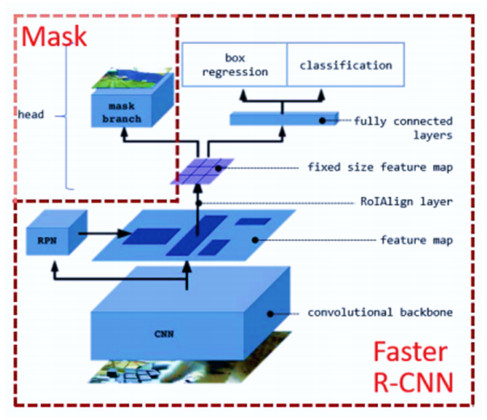
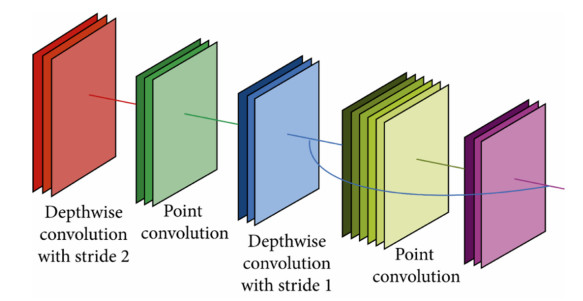
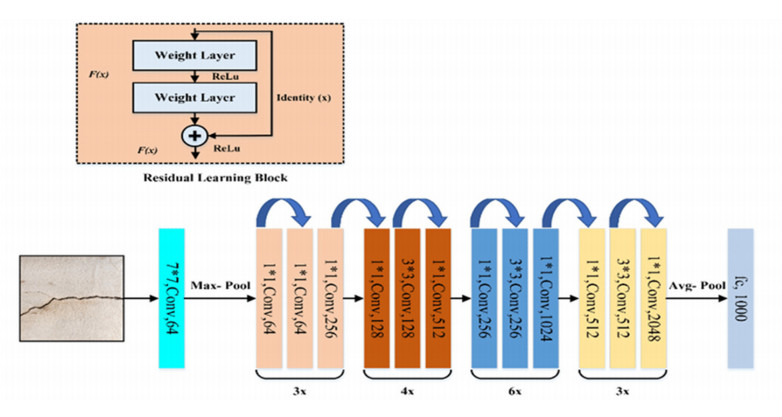
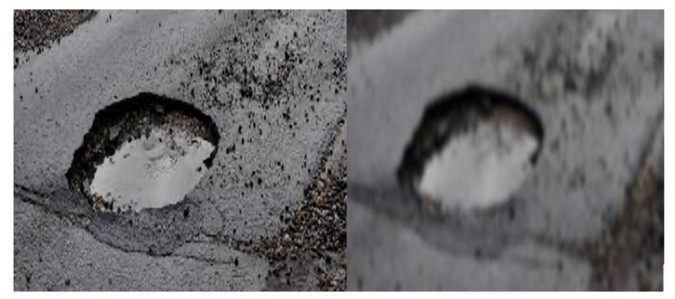

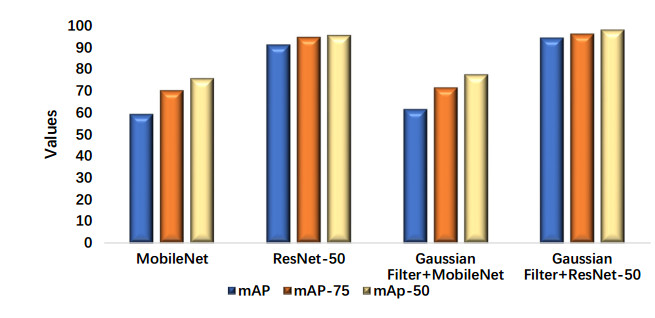
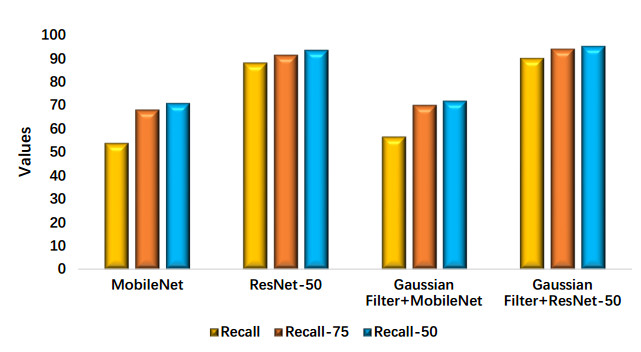
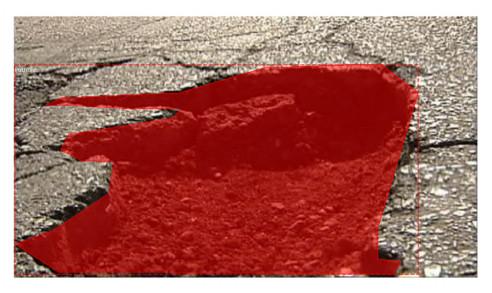
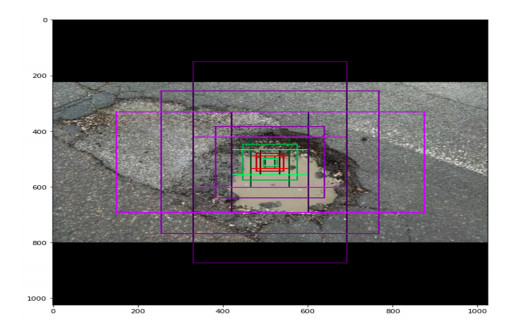



 DownLoad:
DownLoad: